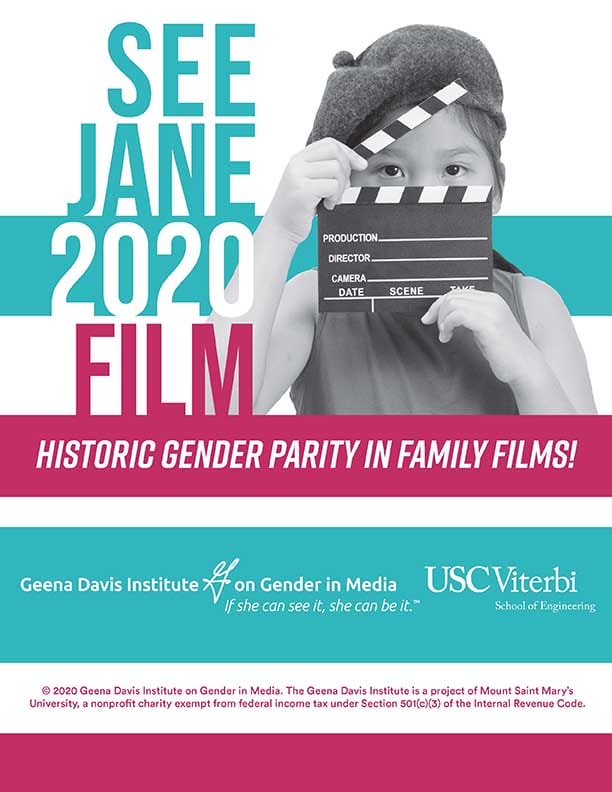This pivotal report reveals a landmark achievement in gender parity among lead characters in 2019’s top-grossing family films. For the first time, the percentage of female lead characters equaled that of males, marking a significant step towards gender equality in media. However, the report also underscores persistent challenges. Supporting female characters are still outnumbered two-to-one by males, and stereotypical portrayals continue to pervade film narratives. Additionally, women of color and older women remain underrepresented in key roles. The report calls for more inclusive representation that transcends lead characters to encompass all roles and demographics.
Gender
- We have achieved another historic milestone: For the first time, lead female characters have reached parity in the top-100 grossing family films! The percentage of female leads in family films has doubled from 2007 (24%) to 2019 (48%).
- We see signs of progress with female characters’ speaking time in family films. The percentage of speaking time has increased from 31.3% in 2014 to just under 40% in 2019.
- The percentage of female characters’ screen time has also increased nearly 10 percentage points since 2014 — from 34.9% to 42.6% in 2019.
- When it comes to female leading characters, 67.3% are white women and 32.6% are women of color. People of color are 38% of the U.S. population, which means that women of color are still underrepresented in leading roles.
- We have not seen much gender-related progress among supporting characters. Male supporting characters still outnumber female supporting characters 2:1.
- Female characters are six times more likely than male characters to be shown in revealing clothing (18.6% compared with 2.7%).
- With age, a majority of female characters in family films are under age 40 (60.2%), while a majority of male characters are ages 40 and older (56.4%) in 2019.
Race
- We see signs of progress for people of color in leading roles. The percentage of leads of color has increased dramatically in the past decade to a historic high of 30% in 2019. This is up from 22% in 2007.
- White characters are more likely than characters of color to be portrayed as having higher socioeconomic status (“upper-class”) in family films (14.8% compared with 8.7%).
- White characters and characters of color are equally likely to be shown as having an occupation. No significant differences are found in terms of professional, managerial, STEM, or other occupation types.
- White characters are more likely than characters of color to be shown as leaders (46.7% compared with 39.8%).
LGBTQ+
- Only 2% of family films in 2019 featured a leading LGBTQ+ character, down from a historic high of 5% in 2018.
- LGBTQ+ characters are more likely than heterosexual characters to be shown in revealing clothing (27.8% compared with 8.8%).
- LGBTQ+ characters are more likely than heterosexual characters to die in family films (16.7% compared to 11.9%).
- A greater percentage of LGBTQ+ characters than heterosexual characters are portrayed as sexually promiscuous (5.6% compared with 1.6%).
- Heterosexual characters are more likely than LGBTQ+ characters to be portrayed as hardworking (51.9% compared with 33.3%).
- Heterosexual characters are more likely than LGBTQ+ characters to be portrayed as smart (41.6% compared to 27.8%).
Disability
- We see signs of progress with disability representations. Eight percent of family films featured a lead with a disability in 2019 — a historic high.
- Characters with disabilities are more likely than other characters to be rescued in family films (34.3% compared with 20.6%).
- Characters with disabilities are nearly twice as likely as other characters to die in family films (20.0% compared with 11.7%).
- Characters with disabilities are more likely than other characters to be represented as hardworking, in management positions, in STEM occupations, and as leaders.
Age
- People ages 60 and older make up 19% of the American public but only 9.1% of characters in family films and only 3.5% of leading characters.
- Characters ages 60 and older are more likely than younger characters to be shown with zero sexual partners (97.3% compared with 87.2%). This gap reinforces the stereotype that elderly people are nonsexual.
- Only 39.1% of characters ages 60 and older are shown as having an occupation, compared with 80.7% of younger characters.
- Characters ages 60 and older are more likely than younger characters to be shown in management positions and as leaders in the workplace.
Large Body Type
- Overall, only 8.3% of characters have a large body type, which means this identity group is underrepresented in family films when compared with the broader population.
- A sizable number of large-bodied characters in family films are presented as damaging stereotypes — lazy (7.4%), physically slow (8.5%), stupid (9.6%), poorly dressed (8.5%), clumsy (7.4%), and as a punchline (9.6%).
- Large-bodied characters are less likely than other characters to be shown as smart (35.1% compared with 42.1%).
- When it comes to verbal shaming from other characters or narrators, 7.4% of large characters are verbally shamed in family films.
Recommendations
- Increase representation of women, people of color, people with disabilities, people with larger body types, LGBTQIA+ people, and people ages 50 and older.
- Avoid sexualizing female characters.
- Avoid stereotyping characters across all six major identities.

